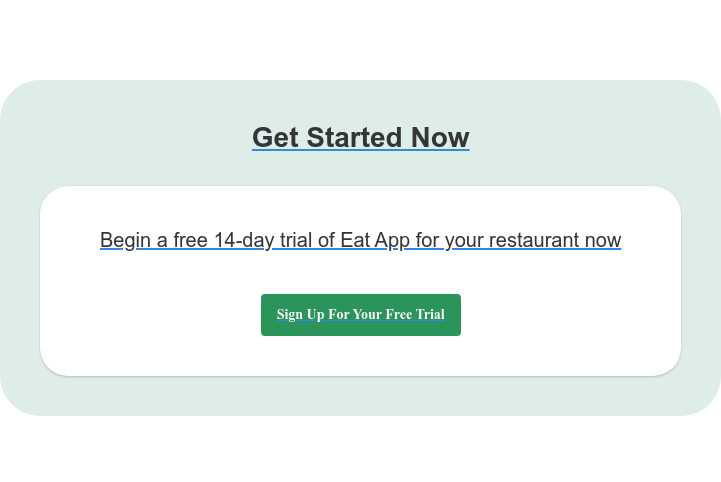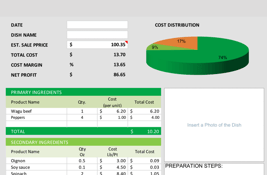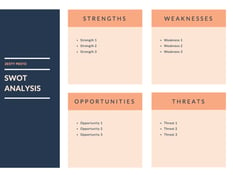Running restaurant operations like inventory management, staff scheduling, financial analysis, etc. without a hitch is a tricky task. How do you ensure that your restaurant is operating as efficiently and effectively as possible at all times? How do you know how many servers you should have on the floor during the lunch shift? How do you know how much inventory you need for the upcoming weekend?
This is where restaurant sales forecasting comes in.
Restaurant forecasting helps restaurant owners make informed and accurate decisions for staffing, purchasing, profitability, etc., and helps them foresee upcoming seasonality trends and predict how they might affect the business.
This allows restaurant owners to be better prepared for what’s coming.
Restaurant forecasting can be tricky to evaluate. It requires a thorough understanding of your business’s performance and involves a lot of math. However, it helps restaurant owners increase revenue and decrease costs significantly, which makes it a very important part of your restaurant’s success.
In this article, we will have a look at what restaurant forecasting is, why it’s important, and how you can easily forecast sales for your restaurant with a few simple steps.
.webp?width=782&height=521&name=Restaurants-Bars-Featured%20(1).webp)
What is restaurant forecasting?
Restaurant forecasting is the process of using historical data to predict upcoming sales volume for a given period of time to make informed decisions about restaurant operations including purchasing, staffing, hiring, etc.
It allows restaurants to be prepared for the upcoming season and also helps them set revenue and growth goals accordingly.
Why forecasting is important
1. Better inventory management
Having the right amount of inventory at your restaurant is a difficult thing to master. If you purchase too little, your restaurant will not be able to serve customers properly, while purchasing more will lead to wastage of materials and money.
Unsurprisingly, food inventory is one of the most wasted materials at restaurants. Forecasting helps optimize inventory management for restaurants by providing insight into menu items that are most popular. Plus, how often they are ordered so that restaurant owners and managers can stock the right amount of inventory based on the prediction.
This reduces the likelihood that the restaurant will run out of any ingredient, and also reduces wastage and saves cost, which in turn increases profitability in the long run.
2. Informed planning
Apart from optimizing inventory management, forecasting also allows restaurant owners to be better prepared for the peak and non-peak seasons at their restaurants. They can make more informed decisions about staffing, hiring, marketing, advertising, etc. based on the sales forecast.
For instance, if your restaurant sees a massive increase in sales during the festive period, you can better prepare by hiring extra staff and training them in advance to provide the best customer experience possible. For the off-peak seasons based on the sales forecast, you can dedicate some more time and effort towards marketing and advertising to attract more diners to your restaurant.
3. Predict profitability
The most important aspect of restaurant operations that owners and managers have to keep track of is its profitability. Earning a substantial profit is the only thing that helps restaurants run smoothly and gives them the opportunity to grow further. Regular forecasting allows restaurant owners to have an estimated idea of how much revenue and profit they can expect in the coming period of time, and make decisions about increasing or decreasing costs accordingly.
4. Set goals accordingly
With estimated profitability in hand, restaurant owners can set their goals for the upcoming time period more accurately. If the predicted profits are high, they can start building plans for growth and expansion, whereas a low predicted profit can lead to a plan to cut down costs and find alternative ways to increase revenue.
Restaurant forecasting paints a clear picture of what to expect in the future, helping restaurants better understand their restaurant performance and create informed strategies that lead to success.
How to forecast restaurant sales for existing restaurants
Restaurant forecasting is heavily dependent on historical data. If your restaurant has been actively collecting and analyzing sales data over the years, forecasting can be done with a quick and simple process.
With past data in place, here’s how you can forecast your restaurant’s sales.
- Analyze historical data: Look at sales volume for the same period of time in the past years. Restaurant sales tend to follow the same trends year after year, so looking at past data from the same time period will give you a better understanding of what you can expect.
- Identify trends: Looking at the data from previous years will help you identify your restaurant’s usual sales trends. You can better understand what your customers prefer - what meal they prefer to have at your restaurant, what days of the week tend to be the busiest, what dish is the most popular, etc. Identifying these trends will help you better predict and prepare for what’s coming. For instance, if Friday has been the most popular day of the week in the last year, you can prepare to be more staff-equipped on Fridays for this year as well.
- Assess recent trends: While historical data is a good indicator of upcoming sales, you should also take into account how your restaurant’s sales have changed in this time period compared to the last. For instance, if you have noticed an average 6-9% rise in sales this year on a monthly basis compared to the last, then add a 6-9% increase in sales prediction for the upcoming months as well.
- Account for external factors: External factors are completely out of your hands but can significantly affect your restaurant’s sales. While it’s difficult to predict external forces, assessing the current situation around you can be helpful in curating a more accurate sales forecast. For instance, if there is any political unrest in your location, you can take that into account as that can affect your restaurant sales in the future.
How to forecast sales for a new restaurant
When opening a new restaurant, there is no historical data to analyze and forecast upcoming sales with. However, having an estimated sales forecast is an important part of a new restaurant’s business plan and helps restaurant owners make informed decisions.
Here’s how you can forecast restaurant sales for a new restaurant.
- Select a time period - day, week, month, or year.
- Determine working hours and days within the given time period.
- Predict the average number of customers you will be serving every day. As there is no historical data, this number will have to be an educated guess based on the number of seats available, delivery options, etc.
- Calculate the average number of customers served in the chosen time period. Let’s say you have chosen a week as your time period. The average number of customers served would be avg. number of customers served in a day x 7.
- Calculate the average spend/customer. This can be predicted on the basis of your menu pricing. Again, it will not be very accurate, however, it can provide a good estimate.
- Calculate Sales Forecast = Number of Days Open x Average Number of Customers Served in Chosen Time Period x Average Spend/Customer
This method will provide you with an estimated sales forecast for your new restaurant. You can improve the accuracy level of your forecasts over time by properly comparing the estimated sales forecast to actual sales and identifying any discrepancies and taking them into account for your next forecast.
How tech can help with restaurant forecasting
Having in-depth and accurate historical data to look back upon is the most important factor for accurate sales forecasting for a restaurant. However, collecting this data regularly can get difficult, especially if you are doing it manually.
A restaurant’s POS plays an important role in forecasting sales as it regularly collects sales data. However, this data can be difficult to understand and access.
Integrating your POS with table management systems like Eat App can help restaurants access and take a deep dive into all the sales data collected by their POS systems, including average guest spend, number of visits, last visit, order history, and so much more.
These data points that are available on Eat App’s advanced reporting system along with various other important reports, provide restaurant owners and managers with deep insights about the restaurant’s sales and performance, which in turn allows them to analyze and identify trends, and make accurate sales forecasts for upcoming time periods.
Systems like Eat App also take away all the manual work from data collection. By integrating your POS system with Eat App, you can access all your guest data under one dashboard and easily sort and filter it on the basis of time and other factors, making it easier to identify trends for forecasting.
Interested in finding out more about Eat App’s reporting and POS integration feature? Schedule a free demo with one of our product specialists now.














.webp?width=200&name=v2-15mknc-qpw1b%20(1).webp)
.webp?width=200&name=v2-15kqni-p0exl%20(1).webp)
-1.png?width=1812&height=1072&name=TripAdvisor%20%26%20More%20Bookings%20(1)-1.png)
-2.png?width=1812&height=1072&name=Google%20Bookings%20(1)-2.png)


-1.png?width=200&name=TripAdvisor%20%26%20More%20Bookings%20(1)-1.png)
-2.png?width=200&name=Google%20Bookings%20(1)-2.png)
-1.png?width=200&name=Instagram%20Bookings%20(1)-1.png)
-1-png.webp?width=200&name=Facebook%20Integration%20Rectangle%20(1)-1-png.webp)







.webp?width=200&name=download%20(1).webp)
%20(1)-2.webp?width=200&name=Eat%20(34)%20(1)-2.webp)
%20(1)-2.webp?width=200&name=Eat%20(18)%20(1)-2.webp)





.webp?width=670&height=440&name=Restaurants-Bars-Featured%20(1).webp)



%20(1)-1.webp?width=314&height=175&name=Eat%20(62)%20(1)-1.webp)


.webp?width=144&height=72&name=Eat%20App%20Logo%20(3).webp)